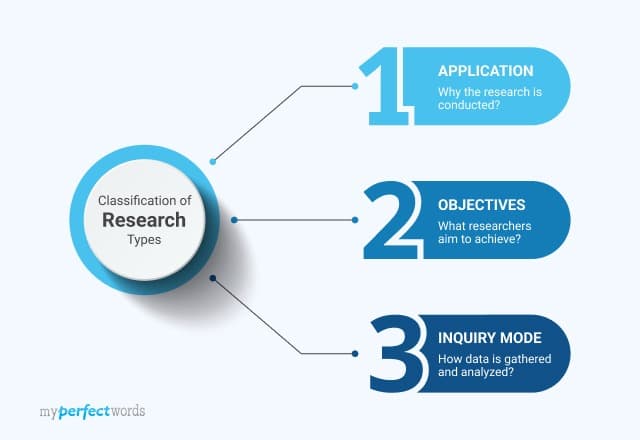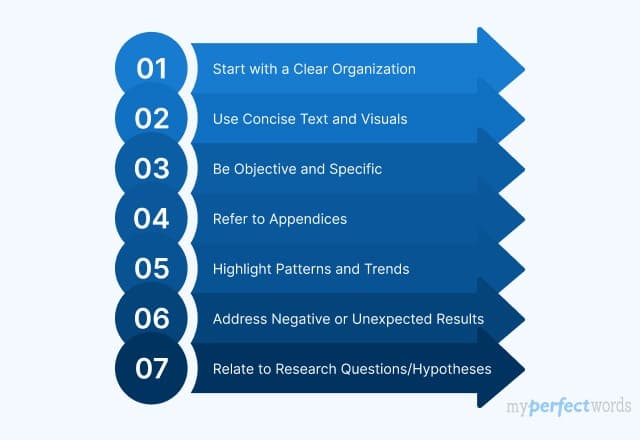

Are you overwhelmed by the multitude of qualitative research methods available? It's no secret that choosing the right approach can leave you stuck at the starting line of your research.
Selecting an unsuitable method can lead to wasted time, resources, and potentially skewed results. But with so many options to consider, it's easy to feel lost in the complexities of qualitative research.
Fear not!
In this comprehensive guide, we will explain the types of qualitative research, their unique characteristics, advantages, and best use cases for each method.
Let's dive in!
On This Page![]()
- 1. What is Qualitative Research?
- 2. Types of Qualitative Research Methods
- 3. Types of Data Analysis in Qualitative Research
What is Qualitative Research?
Qualitative research is a robust and flexible methodology used to explore and understand complex phenomena in-depth.
Unlike quantitative research, qualitative research dives into the rich and complex aspects of human experiences, behaviors, and perceptions.
At its core, this type of research question seeks to answer for:
- Why do people think or behave a certain way?
- What are the underlying motivations and meanings behind actions?
- How do individuals perceive and interpret the world around them?
This approach values context, diversity, and the unique perspectives of participants.
Rather than seeking generalizable findings applicable to a broad population, qualitative research aims for detailed insights, patterns, and themes that come from the people being studied.
Characteristics of Qualitative Research
Qualitative research possesses the following characteristics:
- Subjective Perspective: Qualitative research explores subjective experiences, emphasizing the uniqueness of human behavior and opinions.
- In-Depth Exploration: It involves deep investigation, allowing a comprehensive understanding of specific phenomena.
- Open-Ended Questions: Qualitative research uses open-ended questions to encourage detailed, descriptive responses.
- Contextual Understanding: It emphasizes the importance of understanding the research context and setting.
- Rich Descriptions: Qualitative research produces rich, descriptive findings that contribute to a nuanced understanding of the topic.
Types of Qualitative Research Methods
Researchers collect data on the targeted population, place, or event by using different types of qualitative research analysis.
Each qualitative research method offers a distinct perspective, enabling researchers to reveal concealed meanings, patterns, and valuable insights.
Below are the most commonly used qualitative research types for writing a paper.
Ethnographic Research Method
Purpose | To describe and understand cultural characteristics within human societies. |
Method | Reviewing the Literature: Gathering existing knowledge and insights from academic and historical sources. Fieldwork: Immersion in the environment where the target audience resides, living with and interacting with subjects. Data collection through extensive observation and direct engagement. |
Analysis | The analysis phase aims to describe the fundamental parameters of the culture under study. |
Outcomes | Comprehensive descriptions of social norms, values, customs, and practices within the studied culture. |
Ethnography, a subfield of anthropology, provides a scientific approach to examining human societies and cultures. It ranks among the most widely employed qualitative research techniques.
In ethnographic field notes, researchers actively engage with the environment and live alongside the focus group.
This immersive interaction allows researchers to gain insights into the objectives, motivations, challenges, and distinctive cultural attributes of the individuals under study.
Key cultural characteristics that ethnography helps to illustrate encompass:
- Geographical Location
- Religious Practices
- Tribal Systems
- Shared Experiences
- Lifestyles
Unlike traditional survey and interview-based research methods, ethnographers don't rely on structured questioning.
Instead, they become observers within the community, emphasizing participant observation over an extended period. However, it may also be appropriate to complement observations with interviews of individuals who possess knowledge of the culture.
Ethnographic research can present challenges if the researcher is unfamiliar with the social norms and language of the group being studied.
Furthermore, interpretations made by outsiders may lead to misinterpretations or confusion. Therefore, thorough validation of data is essential before presenting findings.
Example An effective way to understand customer needs is by observing their daily activities and interactions with a product. This approach doesn't necessitate formulating hypotheses for testing but instead requires immersion in the subjects' social lives. |
Narrative Method
Purpose | Collect data in the form of a cohesive story. |
Method | Review of Sequence of Events: Examining the sequence of events and conducting interviews to describe the significant influences that have shaped an individual's life. Analysis: Analyzing various life situations and opportunities that have played a role in the individual's narrative. |
Outcomes | Presenting a short narrative that includes themes, conflicts, and challenges. |
The narrative research design unfolds over an extended period to compile data, much like crafting a cohesive story. Similar to a narrative structure, it begins with a starting point and progresses through various life situations.
In this method, researchers engage in in-depth interviews and review relevant documents. They explore events that have had a significant impact on an individual's personality and life journey. Interviews may occur over weeks, months, or even years, depending on the depth and scope of the narrative being studied.
The outcome of narrative research is the presentation of a concise story that captures essential themes, conflicts, and challenges. It provides a holistic view of the individual's experiences, both positive and negative, which have shaped their unique narrative.
Example The narrative method finds practical application in the business world. It can help in understanding the diverse challenges faced by a target audience. Moreover, it can be leveraged to foster innovation and guide the development of products and solutions that resonate with the audience's narrative. |
Phenomenological Method
Purpose | To describe experiences, events, or situations from various perspectives. |
Method | Sampling and Data Collection: Collecting data through interviews, observations, surveys, and document analysis. Describing and Writing Experiences: Articulating the experiences related to the phenomenon under study. |
Data Analysis | Classifying data and exploring experiences beyond conscious awareness. |
Outcomes | Creation of a database that presents findings from the subject's viewpoint. |
The term "phenomenological" pertains to the study of phenomena, which can encompass events, situations, or experiences.
This method is ideal for examining a subject from multiple perspectives and contributing to existing knowledge, with a particular focus on subjective experiences.
Researchers employing the phenomenological method use various data collection techniques, including interviews, site visits, observations, surveys, and document reviews.
These methods help gather rich and diverse data about the phenomenon under investigation.
A central aspect of this technique is capturing how participants experience events or activities, delving into their subjective viewpoints. Ultimately, the research results in the creation of a thematic database that validates the findings and offers insights from the subject's perspective.
Example The phenomenological research method is valuable for understanding why students are increasingly opting for online courses. It allows researchers to explore the reasons behind this trend from the subjective experiences of students, providing valuable insights into their motivations and preferences. |
Grounded Theory Method
Purpose | To develop theories, identify social developments, and understand ways to address them. |
Method | Data Collection Methods: Gathering data through interviews, observations, literature reviews, and document analysis. Analysis: Developing theories through a systematic process of data collection, coding, and theory formation. |
Outcomes | The development of theories is supported by relevant examples drawn from the collected data. |
A grounded theory approach differs from a phenomenological study in that it seeks to explain, provide reasons for, or develop theories behind an event or phenomenon.
It serves as a means to construct new theories by systematically collecting and analyzing data related to a specific phenomenon.
Researchers employing the grounded theory method utilize a variety of data collection techniques, including observation, interviews, literature review, and the analysis of relevant documents.
The focus of content analysis is not individual behaviors but a specific phenomenon or incident.
This method typically involves various coding techniques and large sample sizes to identify themes and develop more comprehensive theories.
Example Businesses can employ this method to conduct surveys and gain insight into why consumers choose their products or services. The data collected through such surveys can aid companies in enhancing and maintaining customer satisfaction and loyalty. |
Case Study Research
Purpose | To provide a detailed description of an experience, person, event, or place. |
Method | Direct Observation and Interaction with the Subject: Gaining a deep understanding of the subject through firsthand experiences and engagement. |
Analysis | Analyzing the experiences and insights gained from the case study. |
Outcomes | Delivering an in-depth and comprehensive description of the subject under study. |
The case study approach entails a comprehensive examination of a subject over an extended period, with a focus on providing detailed insights into the subject, which can be an event, person, business, or place.
Data for case studies is collected from diverse sources, including interviews, direct observation, historical records, and documentation.
Case studies find applications across various disciplines, including law, education, medicine, and the sciences. They can serve both descriptive and explanatory purposes, making them a versatile research methodology.
Researchers often turn to the case study method when they want to explore:
- 'How' and 'why' research questions
- Behaviors under observation
- Understanding a specific phenomenon
- The contextual factors influencing the phenomena
Example Businesses can effectively showcase their solutions and problem-solving capabilities through case studies. Let's consider a scenario where Company AB introduces new UX designs in an agile environment. This case study can offer valuable insights for other companies seeking similar enhancements. |
Historical Method
Purpose | To describe and examine past events for a better understanding of present patterns and the ability to predict future scenarios. |
Method |
|
Analysis | Analyzing the collected data by assessing its credibility and considering conflicting evidence. |
Outcomes | Presenting the research findings in the form of a biography or scholarly paper. |
The historical method aims to describe and analyze past events, offering insights into present patterns and the potential to predict future scenarios.
Researchers formulate research problems based on a hypothetical idea and then rigorously test this idea using multiple historical resources.
Key steps in the historical method include:
- Developing a research idea
- Identifying appropriate sources such as archives and libraries
- Ensuring the reliability and validity of these sources
- Creating a well-organized research outline
- Systematically collecting research data
The analysis phase involves critically assessing the collected data, accepting or rejecting it based on credibility, and identifying any conflicting evidence.
Ultimately, the outcomes of the historical method are presented in the form of a biography or a scholarly paper that provides a comprehensive account of the research findings.
Example Businesses can harness the historical method by examining past ad campaigns and the demographics they target. This historical data can inform the creation of new ads and help tailor qualitative market research strategies for better outcomes. |
Action Research
Purpose | To improve and address practical issues, problems, or challenges in real-world settings by taking action and conducting research simultaneously. |
Method |
|
Outcomes | The outcomes of action research include practical solutions, improved practices, and enhanced understanding of the issue. |
Action research is a dynamic research approach focused on addressing practical challenges in real-world settings while simultaneously conducting research to improve the situation.
It follows a cyclic process, starting with the identification of a specific issue or problem in a particular context.
The key steps in action research include:
- Planning and implementing actions to address the issue
- Collecting data during the action phase to understand its impact
- Reflecting on the data and analyzing it to gain insights
- Adjusting the action plan based on the analysis
This process may be iterative, with multiple cycles of action and reflection.
The outcomes of action research are practical solutions and improved practices that directly benefit the context in which the research is conducted. Additionally, it leads to a deeper and more nuanced understanding of the issue under investigation.
Example In education, action research can be used by teachers to identify and address classroom challenges. For instance, a teacher may recognize that a particular teaching method is not effectively engaging students. Through action research, the teacher can develop and implement new teaching strategies, collect data on their effectiveness, analyze the results, and refine the teaching approach to enhance student learning outcomes. |
Focus Groups
Purpose | To gather qualitative data by engaging a small group of participants in a structured discussion on a specific topic or research question. |
Method |
|
Analysis | Analyzing the data collected from the focus group discussion to identify themes, patterns, and insights. |
Outcomes | The outcomes of focus groups include rich qualitative data that provide a deeper understanding of the research topic or question. |
Focus groups are a qualitative research method used to gather in-depth insights and perspectives on a specific topic or research question.
This approach involves assembling a small group of participants who possess relevant knowledge or experiences related to the research focus.
Key steps in the focus group method include:
- Selecting participants
- Moderating the discussion
- Structuring the conversation around open-ended questions
- Collecting data through audio or video recordings and note-taking
The discussion is dynamic and interactive, encouraging participants to share their thoughts, experiences, and opinions.
The analysis phase involves reviewing the data collected from the focus group discussion to identify common themes, patterns, and valuable insights. Focus groups provide rich qualitative data that offer a deeper and more nuanced understanding of the research topic or question.
Example In the development of a new mobile app, a focus group can be organized with potential users to gather feedback on user interface design and functionality. Participants in the focus group can share their preferences, concerns, and suggestions, providing valuable input to improve the app's usability and appeal. |
Types of Data Analysis in Qualitative Research
Qualitative research employs different data analysis methods, each suited to specific research goals:
- Thematic Analysis: Identifies recurring themes or concepts within data.
- Content Analysis: Systematically categorizes and quantifies text or media content.
- Narrative Analysis: Focuses on storytelling and narrative elements in data.
- Grounded Theory Analysis: Develops or refines theories based on data.
- Discourse Analysis: Examines language and communication patterns.
- Framework Analysis: Organizes data using predefined categories.
- Visual Analysis: Interprets visual data like photos or videos.
- Cross-case Analysis: Compares patterns across multiple cases.
The choice depends on research questions and data type, enhancing understanding and insights.
Benefits of Qualitative Research
Qualitative research offers valuable advantages, including:
- Flexibility: Adaptable to various research questions and settings.
- Holistic Approach: Explores multiple dimensions of phenomena.
- Theory Development: Contributes to theory creation or refinement.
- Participant Engagement: Fosters active participant involvement.
- Complements Quantitative Research: Provides a comprehensive understanding.
All in all, different types of qualitative research methodology can assist in understanding the behavior and motivations of people. Similarly, it will also help in generating original ideas and formulating a better research problem.
However, not everyone can write a good research paper. Thus, if you get stuck at any stage, you can get professional help.
MyPerfectWords.com is the best paper writing service, where you can hire a professional writer from our paper writing service.
We assure you that you will receive high-quality paper at the most reasonable rates.
Contact our team with your "pay for my research paper" queries. We are available 24/7!

Write Essay Within 60 Seconds!
Use our AI tool to generate high quality essay
WRITTEN BY
Alexander P.
Harvard Law graduate. I build arguments anticipating every objection and dismantling it before it's raised. Airtight logic is non-negotiable.
Keep reading
Research Paper Writing - A Step by Step Guide

Research Paper Examples: Free Samples & Templates for Students

Guide to Creating Effective Research Paper Outline

A Catalog of 300+ Research Paper Topics
-9352.jpg&w=828&q=75&dpl=dpl_7deDiunioHBwnGGEzFkCftFutUcJ)
Research Proposal Writing - A Step-by-Step Guide

How to Start a Research Paper - 7 Easy Steps
-9374.jpg&w=828&q=75&dpl=dpl_7deDiunioHBwnGGEzFkCftFutUcJ)
How to Write an Abstract for a Research Paper - A Step by Step Guide

Writing a Literature Review For a Research Paper - A Comprehensive Guide

Qualitative Research - Methods, Types, and Examples

Qualitative vs Quantitative Research - Learning the Basics

200+ Engaging Psychology Research Paper Topics for Students in 2025

Learn How to Write a Hypothesis in a Research Paper: Examples and Tips!

20+ Types of Research With Examples - A Detailed Guide

Understanding Quantitative Research - Types & Data Collection Techniques

230+ Sociology Research Topics & Ideas for Students

How to Cite a Research Paper - A Complete Guide

Excellent History Research Paper Topics- 300+ Ideas

A Guide on Writing the Method Section of a Research Paper - Examples & Tips

How To Write an Introduction Paragraph For a Research Paper: Learn with Examples

Crafting a Winning Research Paper Title: A Complete Guide

Writing a Research Paper Conclusion - Step-by-Step Guide

Writing a Thesis For a Research Paper - A Comprehensive Guide

How To Write A Discussion For A Research Paper | Examples & Tips

How To Write The Results Section of A Research Paper | Steps & Examples

Writing a Problem Statement for a Research Paper - A Comprehensive Guide

Finding Sources For a Research Paper: A Complete Guide

A Guide on How to Edit a Research Paper

200+ Ethical Research Paper Topics to Begin With (2025)

300+ Controversial Research Paper Topics & Ideas - 2025 Edition

150+ Argumentative Research Paper Topics For You - 2025

How to Write a Research Methodology for a Research Paper

